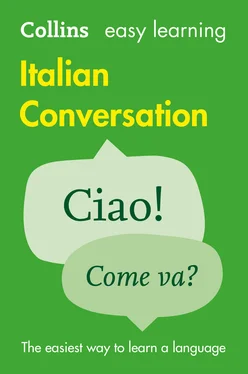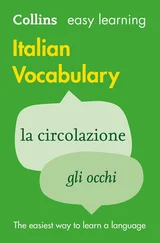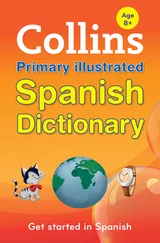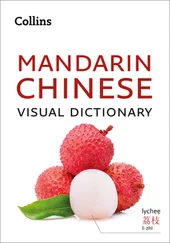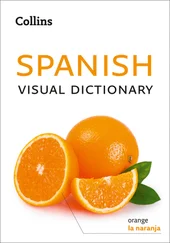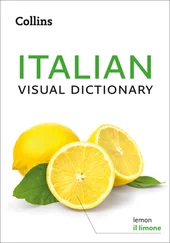Italian pronunciation is not very difficult. Words are written pretty much as they sound, so when you see a word written down you can generally pronounce it with no problem, and when you hear a new word you know immediately how to spell it. There are no sounds in Italian that are very different from English. Below we give some tips to help you speak natural-sounding Italian.
In English, vowels we don’t emphasize often sound like “uh”, so the e in mother and the a in central sound just the same. Sometimes vowels don’t get pronounced at all, as is the case with the first e in interesting . In Italian this never happens. Italian vowels are always clearly pronounced.
Italian vowels are generally pronounced as follows:
| a |
– like the a in apple |
| e |
– like the e in set |
| i |
– like the ee in sheep |
| o |
– like the o in orange |
| u |
– like the oo in soon |
Most Italian consonants are pronounced the same as English ones, except that double consonants are two distinct sounds, so that the ttin tu tt ois pronounced as in hat trick and not as in fitted .
The following are Italian consonants that differ from English:
| c |
– before eand iis pronounced tch (cento, cinema, cioccolato) |
| ch |
– is pronounced like k in kettle (chiesa, chilometro) |
| g |
– before eand iis pronounced like j in jet (gelato, gennaio, giorno, giacca) |
| gh |
– is pronounced like g in get (ghiaccio, laghi) |
| gl |
– before iis normally pronounced like ll in million (meglio, migliaio) |
| gn |
– is pronounced like the ny in canyon (gnocchi, cognome) |
| sc |
– before eand iis pronounced sh (scena, scendere, lasciare,scienza) |
| z |
– is pronounced ds or ts (zucchini, zucchero, mezzo, zia) |
Which syllable to emphasize
To make your Italian sound more fluent and natural you need to stress the right syllable. Here are some guidelines:
• Two-syllable words always stress the first syllable, unless the final vowel has an accent:
|
casa ( house ) |
giorno ( day ) |
|
bella ( beautiful ) |
due ( two ) |
|
sono ( I am ) |
spesso ( often ) |
|
lui ( he ) |
oggi ( today ) |
• Words with three or more syllables generally have the stress on the next to the last syllable:
|
inglese ( English ) |
finito ( finished ) |
|
andare ( to go ) |
andresti ( you’d go ) |
|
venire ( to come ) |
supermercato ( supermarket ) |
|
settimana ( week ) |
straordinariamente ( extraordinarily ) |
• If a word has an accent on the final vowel, it is stressed on the final syllable.
|
età ( age ) |
metà ( half ) |
|
così ( like this ) |
perché ( why, because ) |
Words of this type include many nouns that end in –ty in English
|
università ( university ) |
curiosità ( curiosity ) |
|
città ( city ) |
crudeltà ( cruelty ) |
• Two future tense forms always have an accent ( I and he/she/it/You ):
|
farò ( I’ll do ) |
aspetterò ( I’ll wait ) |
|
sarà ( it will be ) |
si divertirà ( she’ll enjoy herself ) |
• Some words have the stress on a syllable which is not the last, or the next to the last. In this book we use italics to show when an unexpected syllable is stressed, to help you learn the correct pronunciation.
|
u tile ( useful ) |
n u mero ( number ) |
|
m a cchina ( car ) |
c a mera ( room ) |
|
s u bito ( suddenly ) |
c o mpito ( homework ) |
|
diff i cile ( difficult ) |
port a tile ( portable ) |
• It's specially important to notice which syllable you should emphasize when pronouncing infinitives ending in –ere, because they vary. Some, such as a ve re( to have ) and ve de re( to see ) have normal stress, on the next to the last syllable.
However, there are many important exceptions, for example:
|
e ssere ( to be ) |
v e ndere ( to sell ) |
|
sc e ndere ( to get off ) |
div i dere ( to divide ) |
|
sc e gliere ( to choose ) |
ch iu dere ( to close ) |
BUONO A SAPERSI!
Past participles such as fi ni toand par ti toalways have the stress on the next to last syllable, but similar-looking words such as s ubitoand com pitosometimes have the stress on a syllable you wouldn’t expect.
Small talk
Come va? – How are things?
Whether you’re going to be working in Italy or you’re going to spend some time with your Italian-speaking friends, you’ll want to be able to chat with people and get to know them better. The phrases in this unit will help you talk naturally to friends, family and colleagues in a number of everyday situations.
Just as in English, there are several ways of greeting people in Italian, depending on who you are addressing, and whether you want to be formal or not. Say buongiorno( good morning) or buonasera( good afternoon/good evening ), if you want to sound polite.
| Buongiorno. |
Hello. |
| Buongiornosignora Rossi. |
Good morning, Mrs Rossi. |
| BuongiornoFrancesco, come va? |
Good afternoonFrancesco, how are you? |
| Buonasera. |
Good evening. |
BUONO A SAPERSI!
Читать дальше
